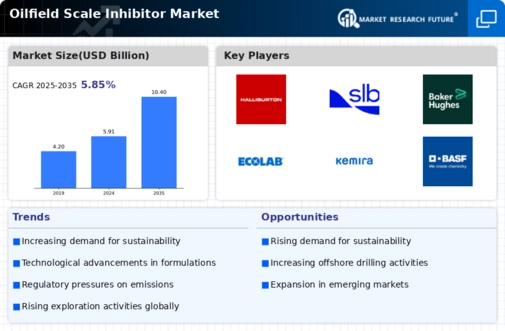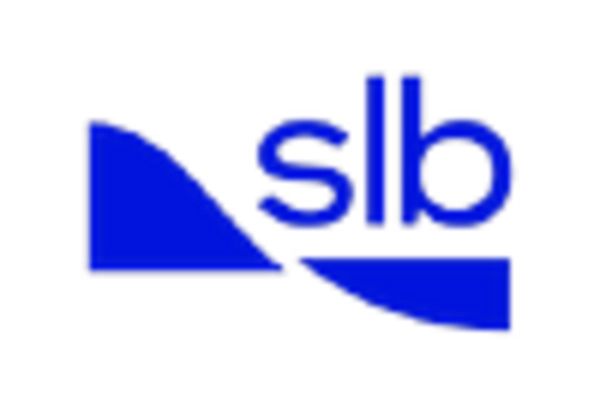Increasing Demand for Oil and Gas
The Oilfield Scale Inhibitor Market is experiencing a surge in demand due to the rising global consumption of oil and gas. As economies expand, the need for energy resources escalates, leading to increased exploration and production activities. This heightened demand necessitates the use of effective scale inhibitors to mitigate the adverse effects of scale formation in production systems. According to recent data, the oil and gas sector is projected to grow at a compound annual growth rate of approximately 3.5% over the next few years. Consequently, the Oilfield Scale Inhibitor Market is poised to benefit from this growth, as operators seek to enhance production efficiency and reduce operational costs through the application of advanced scale management solutions.
Technological Innovations in Scale Management
Technological advancements are playing a pivotal role in shaping the Oilfield Scale Inhibitor Market. Innovations in inhibitor formulations, such as the development of nanotechnology-based solutions, are enhancing the effectiveness of scale management. These advanced inhibitors are designed to provide superior performance in preventing scale deposition, thereby improving the overall efficiency of oil and gas production. Furthermore, the integration of digital technologies, such as real-time monitoring and predictive analytics, is enabling operators to optimize the use of scale inhibitors. This trend is expected to drive growth in the Oilfield Scale Inhibitor Market, as companies increasingly adopt cutting-edge technologies to enhance operational performance.
Regulatory Compliance and Environmental Concerns
The Oilfield Scale Inhibitor Market is significantly influenced by stringent regulatory frameworks aimed at minimizing environmental impact. Governments and regulatory bodies are increasingly enforcing regulations that mandate the use of environmentally friendly chemicals in oil and gas operations. This trend is pushing companies to adopt biodegradable and less toxic scale inhibitors, which not only comply with regulations but also address environmental concerns. The market for such inhibitors is expected to expand as operators prioritize sustainability alongside operational efficiency. As a result, the Oilfield Scale Inhibitor Market is likely to witness a shift towards innovative formulations that meet both regulatory requirements and environmental standards.
Focus on Operational Efficiency and Cost Reduction
In the Oilfield Scale Inhibitor Market, there is a growing emphasis on enhancing operational efficiency and reducing costs. As oil and gas companies face fluctuating prices and increasing operational expenses, the need for effective scale management becomes paramount. Scale formation can lead to significant production losses and increased maintenance costs, prompting operators to invest in reliable scale inhibitors. By implementing advanced scale management strategies, companies can minimize downtime and optimize production processes. Market data suggests that the adoption of effective scale inhibitors can lead to a reduction in operational costs by up to 20%. Thus, the Oilfield Scale Inhibitor Market is likely to thrive as companies seek to improve their bottom line through efficient scale management.
Rising Exploration Activities in Unconventional Resources
The Oilfield Scale Inhibitor Market is witnessing growth driven by the increasing exploration of unconventional oil and gas resources, such as shale gas and tight oil. These resources often present unique challenges related to scale formation due to their complex geological characteristics. As exploration activities intensify, the demand for effective scale inhibitors tailored to these unconventional resources is likely to rise. This trend is supported by data indicating that unconventional oil production is expected to account for a significant portion of total oil output in the coming years. Consequently, the Oilfield Scale Inhibitor Market is positioned to capitalize on this trend by providing specialized solutions that address the specific needs of unconventional resource extraction.


















Leave a Comment